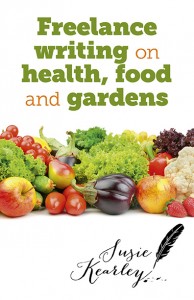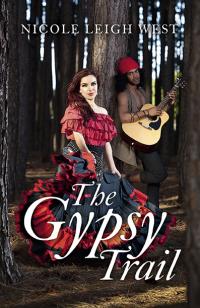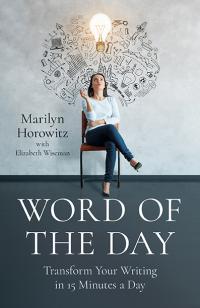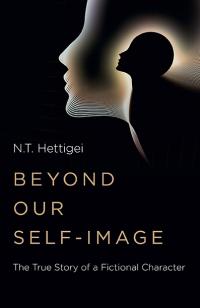
 Every serious
writer needs a website to showcase their work. If you don’t already have one, there are many free sites offering you the tools to build your own, and get your own URL, often free of charge. A website
doesn’t have to be expensive or onerous. A simple site will do to get you started and it can evolve over time, just as you do.
Every serious
writer needs a website to showcase their work. If you don’t already have one, there are many free sites offering you the tools to build your own, and get your own URL, often free of charge. A website
doesn’t have to be expensive or onerous. A simple site will do to get you started and it can evolve over time, just as you do.
Before you get started, it's a good idea to browse other writer’s websites to get a feel for the kind of look, feel, and content that you want to display on your own web-site. Think about your colour scheme, navigation bar, how you want to present yourself, and what downloads you want to make available. You might want to include some of the following:
– Biography or ‘About me’ page;
– A list of some of your clients;
– Sample articles;
– Links to online stories that you’ve written;
– Links to your social media pages;
– A link to your book on Amazon;
– A list of the services that you offer;
– Testimonials from editors;
– Examples of your photography;
– Information on your PR work;
– Contact details;
– A blog;
– An image of yourself so people can see who they are dealing with;
– Images of your published works – books, magazines, newspapers;
– Links to your clients’ websites.
Free websites
There are many free website building tools available online. They include:
– Yola: www.yola.com
– Webs: www.webs.com
– Weebly: www.weebly.com
– Moon Fruit: www.moonfruit.com
Some people create their website using a blogging facility like www.wordpress.com or www.blogger.com. I’d suggest you play around with them and use the one that you find most intuitive, and the easiest to use.
It can take a little bit of time to get your head around how to use the content management system (the tools that enable you to edit the site), but once you've spent some time going through the options, none of these sites is too difficult to manage.
The problems with some of these sites are that the templates are quite rigid and what you can do with them is quite limited. These limitations drive some writers to pay professional website designers to create a more flexible site for them. But unless you have big design ideas, one of these simple sites is probably good enough to get you started. As long as your site gives you a place to showcase your work, that is the most important factor.
Social media
The other hot place to be, especially if you’re trying to promote your latest book, is social media. Sites like Facebook and Twitter are addictive, thriving and free! Things like prize give-aways for one lucky winner who ‘likes’ your page and shares your post can increase your following dramatically within hours.
Some people use social media for fun, frivolity and as a channel to the latest news. Others are sceptical – underwhelmed by the mediocrity, pointlessness and drudgery of it all! Wherever you stand on the spectrum, there’s no denying that social media use is seeing unprecedented growth. The fastest growing demographic of social media users is the over 40s and it’s now so popular that even the elderly are engaging. Watch out for your granny on Facebook sometime soon!
Now I should confess – at first, I didn’t ‘get’ it. I joined Facebook in 2007 and had one friend. I couldn’t understand why anyone would want to have their conversations in front of an audience of 300 people. I deactivated my account a few weeks later following a BBC news report about Facebook identity theft.
I didn’t return to the scene until 2010 when I had an interview for a job as a Social Media Manager and needed a crash course in understanding what it was all about. I befriended my sisters, relatives, and anyone else willing to be my Facebook friend. Then I found a few old acquaintances online too.
My news feed started to provide insight into the lives of people I didn’t see very often – some of whom I hadn’t seen in years, and I started to understand the point of Facebook.
It was another year however, before I was ready to condense my thoughts into 140 characters and brave the booming world of Twitter.
Frankly, I had no interest in Twitter and couldn’t understand the appeal of it, until I read an article written by Matt Britland, an educational blogger whose tweets landed him a writing assignment with The Guardian.
Matt began tweeting without really understanding the point of it all – just like me! First, he posted a few messages to friends, then he started to post his opinions on education in the UK and his following grew. Before he knew it, he had a sizeable following and when he tweeted his disapproval at Michael Gove’s education policies, it was followed an hour later by a request from The Guardian newspaper to write a blog based on his tweets.
“I spent that evening channelling my fury into a post on the subject,” he said (The Power of Twitter, The Guardian Teacher Network, 31 March 2012). The day after the blog was published Sky News got in touch with him asking for an interview on live television. He was starting to get quite a name for himself in the world of education and it was all from posting a few opinions on Twitter.
This article spurred me to open a Twitter account and start tweeting. To date, most of my followers are aspiring writers but there are a few features editors and magazines in there too.
Give your audience what they want
The key to successful social media engagement is in identifying what your audience enjoy and value, giving them lots of it, and inviting them to be interactive and engage with you. Competitions can also drive lots of activity and help you gain new followers. The real key is to generate so much interest that people share your posts with their friends and then your following naturally grows. The term ‘going viral’ is now firmly established in the English language to describe the most widely shared social media posts.
The advantage of having a growing band of followers is that when you want to promote a new book, you have lots of people to tell. You can lure them into your story by publishing a sample of the text. Social media as a marketing tool can serve multiple purposes from staying in touch with editors, to promoting your newly published book.
Is it for you?
Maybe you feel a little unsure about social media, the time it takes, and how difficult it is. This approach is not for everyone, but there’s no denying that social media is the biggest growing medium in marketing, with arguably the greatest potential for you to engage with your audiences successfully.
Think about it – most users stay tuned into their favourite social media platforms all day long on their smart phones, so the potential for this form of promotion to provide positive interaction with your followers is remarkable.
Learn more
This article is an extract of Susie Kearley’s book, Freelance Writing on Health, Food and Gardens, published by Compass Books.
Blog: www.susiekearley.blogspot.co.uk
Facebook: www.facebook.com/susie.kearley.writer
Twitter: www.twitter.com/susiekearley
Buy Paperback: AMAZON US AMAZON UK HIVE INDIEBOUND
Buy eBook: AMAZON US AMAZON UK HIVE INDIEBOUND
This article first appeared in Writer's Wheel Magazine Issue 3
Categories:
0 comments on this article







